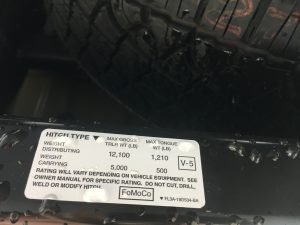
Contents
How to Diagnose a Car Battery Problem: A Step-by-Step Guide
Is your car refusing to start? A dead or dying battery is often the culprit. Before you call a tow truck or spend money on a new battery, let’s learn how to diagnose the problem yourself. This guide will walk you through simple steps to pinpoint the issue and save you time and money.
🛒 Recommended Product
Understanding Car Battery Problems:
Before diving into diagnostics, it’s helpful to understand what can go wrong. A car battery’s main job is to provide the initial electrical jolt to start the engine. Problems can stem from:
- A dead battery: This is the most common issue, usually caused by parasitic drain (accessories drawing power even when the car is off), age, sulfation (build-up on the plates), or extreme temperatures.
- A faulty alternator: The alternator recharges the battery while the engine is running. A malfunctioning alternator means your battery won’t recharge, eventually leading to a dead battery.
- Faulty starter motor: The starter motor is responsible for cranking the engine. If it’s struggling, it can drain the battery quickly.
- Loose or corroded battery terminals: A poor connection prevents the battery from supplying power effectively.
Step-by-Step Diagnosis:
Let’s troubleshoot systematically:
Step 1: Visual Inspection:
- Check the battery terminals: Look for corrosion (white or green powdery substance). Corrosion prevents good electrical contact. Clean them with a wire brush and baking soda solution if necessary.
- Inspect the battery case: Look for cracks, swelling, or leaks. A damaged case indicates potential internal problems.
- Check the battery cables: Ensure the cables are securely fastened to the terminals and not damaged.
Step 2: Test the Battery Voltage:
You’ll need a voltmeter for this. This is the most crucial step.
- Turn off all accessories in your car.
- Connect the voltmeter’s positive (+) lead to the positive (+) terminal of the battery and the negative (-) lead to the negative (-) terminal.
- Check the voltage reading. A healthy battery should register between 12.4 and 12.7 volts. A reading significantly lower indicates a weak or dead battery.
Step 3: Check the Battery During Cranking:
🛒 Recommended Product
- Have someone try to start the car while you monitor the voltmeter.
- Observe the voltage reading. The voltage should stay above 9.6 volts during cranking. A significant drop indicates a weak battery or a problem with the starting system.
Step 4: Test the Alternator (Engine Running):
- Start the engine.
- With the voltmeter still connected, observe the voltage reading. The voltage should rise to between 13.5 and 14.5 volts. A lower reading suggests a faulty alternator.
Step 5: Listen for Unusual Sounds:
During cranking, listen carefully for any unusual clicking, grinding, or whining sounds. These could point to problems with the starter motor or alternator.
Common Mistakes to Avoid:
- Ignoring corrosion: Clean battery terminals are crucial for proper operation.
- Not using a voltmeter: Visual inspection alone isn’t sufficient for accurate diagnosis.
- Jumping the battery incorrectly: Incorrect jump starting can damage your electrical system. Always consult your vehicle’s manual or a reliable online guide for proper jump starting procedure.
- Ignoring low voltage readings: A slightly low voltage reading might seem insignificant but can indicate underlying issues that will worsen.
When to Seek Professional Help:
If you’re uncomfortable performing these tests, or if you’ve identified a problem beyond simple cleaning or tightening, it’s best to seek professional help from a qualified mechanic. They have the tools and expertise to diagnose and repair more complex issues.
By following these steps, you can effectively diagnose your car battery problems, saving yourself time, money, and potential frustration. Remember safety first when working with car batteries – always wear safety glasses and gloves!
🛒 Recommended Product
FAQ
Q. My car won’t start. Is it definitely the battery?
A. While a dead battery is a common reason for a car failing to start, it’s not the only one. Other possibilities include a faulty starter motor, alternator problems, a bad connection in the electrical system, or even a drained fuel system. You need to perform some checks to isolate the problem before concluding it’s the battery.
Q. How can I check my car battery voltage?
A. You’ll need a multimeter. First, ensure the car is off. Then, carefully connect the multimeter’s probes to the battery terminals – the positive (+) probe to the positive terminal and the negative (-) probe to the negative terminal. The multimeter should be set to the DC voltage setting (usually represented by a “V” with a straight line). A reading of below 12.4 volts generally indicates a low charge. A reading significantly lower (e.g., below 11V) suggests a severely depleted battery. Note that engine running voltage should be higher (around 13.5-14.5 volts).
Q. What does a slow engine crank mean?
A. A slow engine crank (when the engine turns over slowly when you try to start it) is a strong indicator of a weak or failing battery. The battery isn’t supplying enough power to the starter motor to turn the engine over quickly. This could be due to low charge, internal damage to the battery, corrosion on the terminals, or a combination of factors.
Q. I see corrosion on my battery terminals. What should I do?
A. Battery terminal corrosion is a common issue that can significantly impede electrical flow. Use a wire brush or a battery terminal cleaner to carefully remove the corrosion from both the terminals and the battery cable ends. After cleaning, apply a thin layer of dielectric grease to prevent future corrosion. Make sure the connections are clean and tight.
Q. My car’s lights are dim. Could this be a battery problem?
A. Dim headlights or interior lights can be a sign of a low battery charge or a failing alternator. A weak battery struggles to provide sufficient power to all the electrical components, resulting in dim lights. However, dim lights can also indicate a problem with the alternator, which is responsible for recharging the battery while the engine is running. Testing both the battery voltage and the alternator’s charging output is recommended.
Q. How do I test my car’s alternator?
A. Testing an alternator requires a multimeter. With the engine running, check the battery voltage again. It should be around 13.5-14.5 volts. A lower reading indicates the alternator may not be charging properly. You might also notice that the voltage drops significantly when you switch on your headlights, indicating a problem with the alternator’s ability to supply adequate current. A professional mechanic can perform a more thorough alternator test.
Q. Should I replace my battery myself or take it to a professional?
A. Replacing a car battery is relatively straightforward and can often be done at home with basic tools. However, if you’re unsure or uncomfortable working with car batteries (they contain corrosive acid), it’s best to take your car to a professional mechanic or auto parts store. They can safely replace the battery and ensure the correct connections are made.
Related Articles
How to Remove Cigarette Smell from Car
How to Remove Cigarette Smell from Your Car: A Complete Guide The lingering smell of cigarette smoke can be incredibly stubborn, turning your beloved …
How to Restore Headlights with Baking Soda
Restore Your Headlights to Like-New Condition with Baking Soda: A Simple DIY Guide Are your headlights cloudy, yellowed, or scratched? Don’t des…
How to Fix a Car Air Conditioning System
How to Fix Your Car’s Air Conditioning System: A Step-by-Step Guide Is your car’s AC blowing hot air on a sweltering summer day? Don’…
Affiliate Disclosure: As an Amazon Associate, I earn from qualifying purchases made through links on this site.










